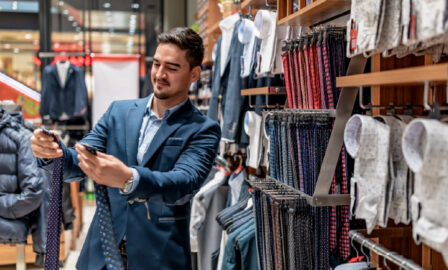The Art of Balancing Localization & Global Standardization in Retail Stores
Balancing localization and global standardization in retail for consumers is becoming increasingly important. Retail can be internally segregated on a multitude of topics, but one we can all align on is the importance of customer centricity relevance. When consumers walk into their retail store of choice they expect relevant and personalized products, now more than ever.
Retail chains have an ever-growing diversity of customers across differing locations and geographies leading to a wide variety of consumer needs to fulfill. Finding the right mix to effectively personalize and meet consumers’ needs can be a monumental challenge. Managing the right balance of localization versus global standardization in retail is key and requires a collaborative effort between both local stores and corporate retail strategies.
Let’s Talk Trade-offs of Localization and Global Standardization in Retail
A standardized product assortment simplifies the P&L and operational efficiency. This provides the consumers with a consistent in-store experience and alleviates the frustration of walking into a store to find that your beloved product is not carried at that location. A 100% nationally standardized store would have held that product, however, that same nationally standardized store may be missing localized product opportunities. For instance, a SKU for one retail store may foster more sales than another due to the customer base and climate. Adapting locally to customer demands can lead to increased sales and loyalty. Finding a perfect balance of products is impossible, but a proposal that considers setting a corporate standard for the level of local products versus national products a store can allow is more manageable. Consider the benefit of having a consistent brand while still allowing flexibility to meet customers’ unique demands. Finding the right balance is the key to success.
Local Store Managers Want a Voice to Drive Sales and Make Things More Relevant
Developing a culture that promotes entrepreneurial spirit and encourages locations and corporate teams to voice their opinion is an important environment for leadership to cultivate. Companies should make it known that the corporate team is listening to the ideas of General Managers and Retail Operation employees at large. Retail Operation employees are living the day-to-day life on the store floor hearing the demands of the customers firsthand. This will give confidence that any corporate standardization initiative was thoughtfully calculated and at the best interest of the company. Regardless of the level of standardization decided, ensure product data is available and that there is alignment between operations locally and the corporate commercial team on the strategy.
Lack of Tools Can Lead to Ineffective Management Between Local Stores and Corporate
To ensure there is transparency between corporate and retail stores it is imperative to invest in robust IT systems and procedures. IT systems can integrate information from all departments and locations into a single system helping make calculated decisions, improving customers services, and automating processes. Developing standard operating procedures that allow for the decided balance of localization and corporate standardization is crucial. Standard operating procedures should be developed collaboratively ensuring there is representation from corporate and store locations. Technology plays a key role in sensing local trends, providing a voice for local managers and consumers, and bringing insights into corporate decisions, so they can rebalance global and local merchandizing and assortment.
Regardless of differing internal priorities all teams can rally around a balance that is right for the consumer. A high percentage of retail employees get to interact directly with shoppers and this valuable nature of the industry should not go to waste. To obtain the right consumer localization and personalization balance, corporate Retail should leverage their local stores to make thoughtful decisions enabled by technology. This can be easier said than done and at times overlooked when corporate locations are often separated from local stores that are scattered across the country or the world. Develop the right culture and technology tools to ensure consumer and local management feedback is effectively communicated throughout the business leading to the treasured goal of consumer centric relevancy and striking the right balance between local and global standardization in retail.
Subscribe to Clarkston's Insights
Contributions by Mikayla Doane.



